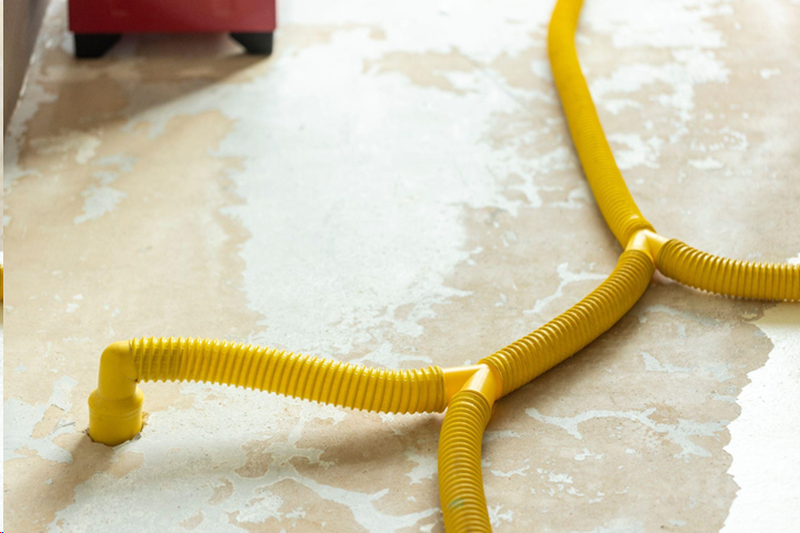Water damage in a home can be distressing, leading to potential structural issues, mold growth, and the deterioration of air quality. Prompt and efficient water removal and extraction services are key to mitigating these risks. Understanding the importance of these services and how they operate can equip homeowners with the knowledge to protect their properties from the long-term effects of water damage.
The Importance of Immediate Water Removal
The first 24 to 48 hours after water intrusion are critical. Water quickly seeps into every available space, saturating the structure of your home, including walls, floors, and furniture. The longer the water sits, the greater the risk of permanent damage and mold growth. Immediate water removal is essential to prevent the escalation of damage, making swift action crucial in these situations.
Identifying the Source of Water Damage
Water damage can stem from various sources, including natural disasters, burst pipes, leaky roofs, etc. Identifying the source is the first step in the water removal process, as it determines the approach for extraction and restoration. Water is categorized based on its contamination level:
Category 1: Clean water from sanitary sources, such as faucets or supply lines.
Category 2: Grey water contains significant contamination and poses health risks, such as water from dishwasher or washing machine leaks.
Category 3: Black water, highly contaminated water from sewage or natural floodwaters.
The category of water involved influences the necessary safety measures and the urgency of the extraction process.
The Water Extraction Process
Water extraction is a specialized process that requires professional equipment and techniques. It involves several key steps:
- Assessment: Professional plumbers begin by thoroughly evaluating the damage, using moisture meters and thermal imaging to identify the extent of water intrusion.
- Extraction: High-powered vacuums and pumps are used to remove standing water. The type of equipment used depends on the severity of the water damage and the category of water involved.
- Drying and Dehumidification: After water extraction, industrial-strength air movers and dehumidifiers are deployed to dry out the affected areas. This step is crucial to prevent mold growth and further damage.
- Sanitization: Especially in grey or black water cases, affected areas need to be sanitized to eliminate bacteria and other harmful pathogens.
- Restoration: The final step involves restoring your home to its pre-damage condition. This may include repairing or replacing flooring, drywall, and other structural elements and addressing any potential mold issues.
Choosing the Right Water Removal Service
When selecting a water removal and extraction service, consider the following factors:
- Certification: Look for services certified by reputable organizations like the Institute of Inspection, Cleaning, and Restoration Certification (IICRC). Certified professionals are trained to handle water damage effectively.
- Experience: Experienced services are more likely to have encountered and successfully managed a wide range of water damage scenarios.
- Response Time: Given the urgency of water removal, choose a service that promises rapid response times to minimize damage.
- Equipment: Ensure the service uses professional-grade equipment for water extraction, drying, and dehumidification.
- Insurance Coordination: An experienced service can help you navigate the complexities of insurance claims, making the process smoother.
Preventive Measures Against Water Damage
While immediate action is crucial in the event of water damage, prevention is always preferable. Homeowners can take several steps to minimize the risk of water damage:
- Regular Maintenance: Regularly inspecting and maintaining plumbing, roofing, and HVAC systems can prevent many common causes of water damage.
- Water Detection Devices: Installing water sensors and alarms can provide early warning of leaks or floods.
- Improving Drainage: Ensuring proper drainage around your home can prevent water from pooling and causing foundation issues.
- Knowledge of Main Water Shut-Off: Knowing how to quickly shut off your home’s main water supply can minimize damage from burst pipes or leaks.
Conclusion
Water damage poses a serious threat to the structural integrity and safety of your home. However, you can mitigate these risks with the proper knowledge and actions. Understanding the urgency of water removal and extraction, selecting the right plumbers for the job, and taking preventive measures can protect your home from the devastating effects of water damage. By prioritizing rapid response and professional intervention, you can preserve the condition of your home and ensure the health and safety of its occupants.
Article Submitted By Community Writer




